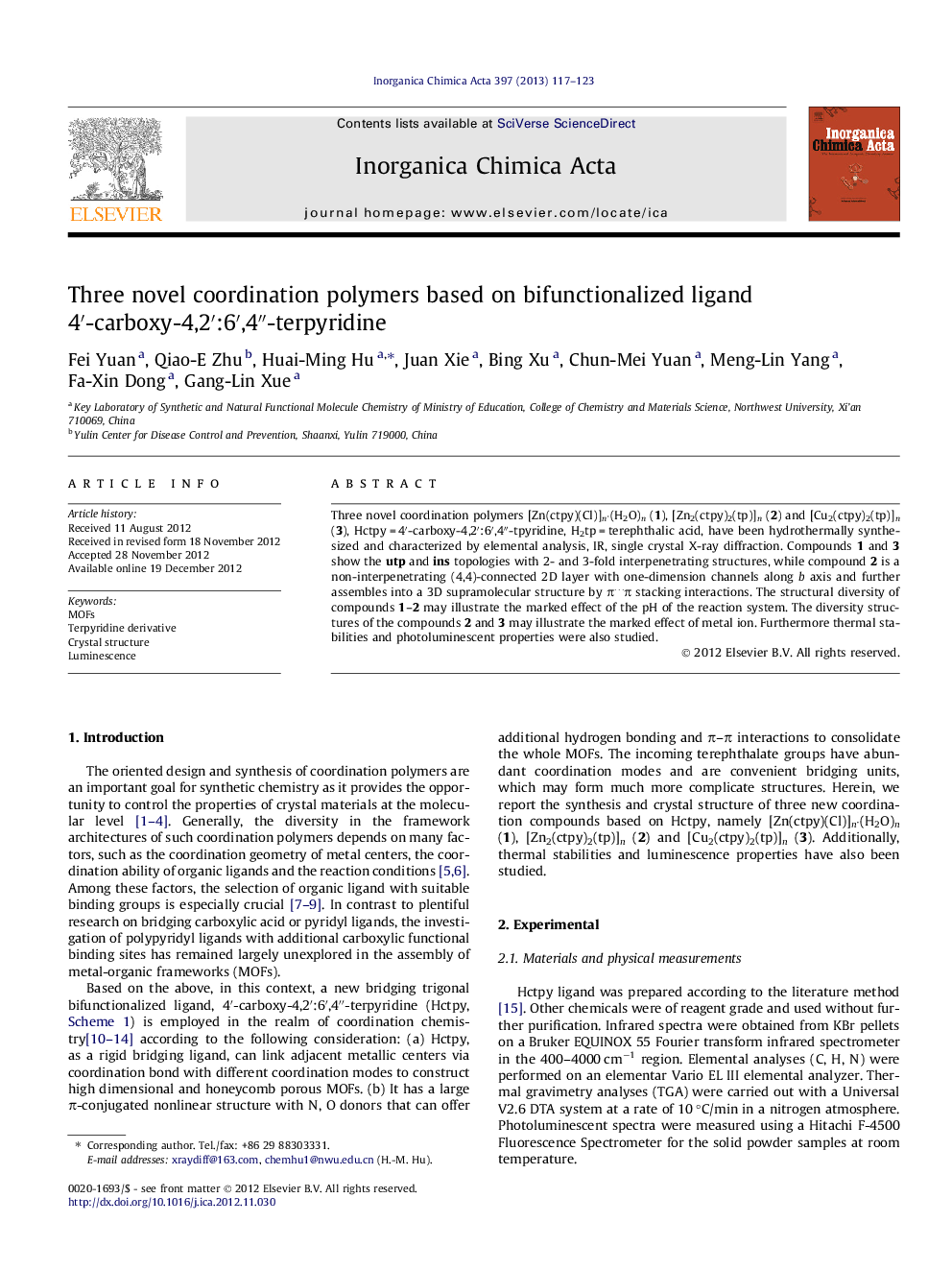| Article ID | Journal | Published Year | Pages | File Type |
|---|---|---|---|---|
| 1312377 | Inorganica Chimica Acta | 2013 | 7 Pages |
Three novel coordination polymers [Zn(ctpy)(Cl)]n·(H2O)n (1), [Zn2(ctpy)2(tp)]n (2) and [Cu2(ctpy)2(tp)]n (3), Hctpy = 4′-carboxy-4,2′:6′,4″-tpyridine, H2tp = terephthalic acid, have been hydrothermally synthesized and characterized by elemental analysis, IR, single crystal X-ray diffraction. Compounds 1 and 3 show the utp and ins topologies with 2- and 3-fold interpenetrating structures, while compound 2 is a non-interpenetrating (4,4)-connected 2D layer with one-dimension channels along b axis and further assembles into a 3D supramolecular structure by π…π stacking interactions. The structural diversity of compounds 1–2 may illustrate the marked effect of the pH of the reaction system. The diversity structures of the compounds 2 and 3 may illustrate the marked effect of metal ion. Furthermore thermal stabilities and photoluminescent properties were also studied.
Graphical abstractThree novel coordination polymers have been synthesized under hydrothermal conditions. Compounds 1 and 3 show the utp and ins topologies with 2- and 3-fold interpenetrating modes, respectively, while compound 2 is a non-interpenetrating (4,4)-connected 2D layer.Figure optionsDownload full-size imageDownload as PowerPoint slideHighlights► Three new coordination polymers were constructed under hydrothermal conditions. ► The pH value and metal ion play an important role for construction of compounds 1–3. ► Compounds 1 and 3 show the utp and ins topologies net, respectively. ► Compounds 1 and 3 are a 2- and 3-fold interpenetrating 3D net, respectively. ► Compound 2 is a non-interpenetrating (4,4)-connected 2D layer.
